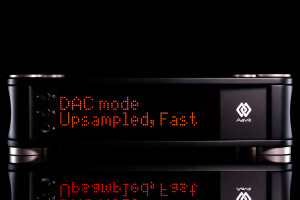The review of Aavik S-180 went live in May 2022. Now it’s time to take for a spin its companion DAC baptized Aavik D-180 and find out whether it’s any good. Enjoy!
Expertise across the board
Most successful audio manufacturers are known for one specific product type that secured their position in the industry, while all else they make supports that core. The Swiss company Boenicke Audio recognizable for its speakers now also offers various electronics, tweaks and cables. LampizatOr’s bread and butter are DACs, alongside which reside streamers, amps, speakers and accessories. Enthusiasts associate LessLoss with a particular type of noise-rejecting cables and signal conditioners, but just next to these products we see three d/a converters, several power components, footers and other enhancers. Denafrips’ lineup that originally comprised only discrete R-2R ladder DACs now also lists DDCs, external clocks, line stages, power amps and one head-fi deck. These are just few examples of audio operations that grew extra branches over the years. This far longer list however doesn’t include today’s company Audio Group Denmark with brands Aavik, Ansuz and Børresen under its umbrella.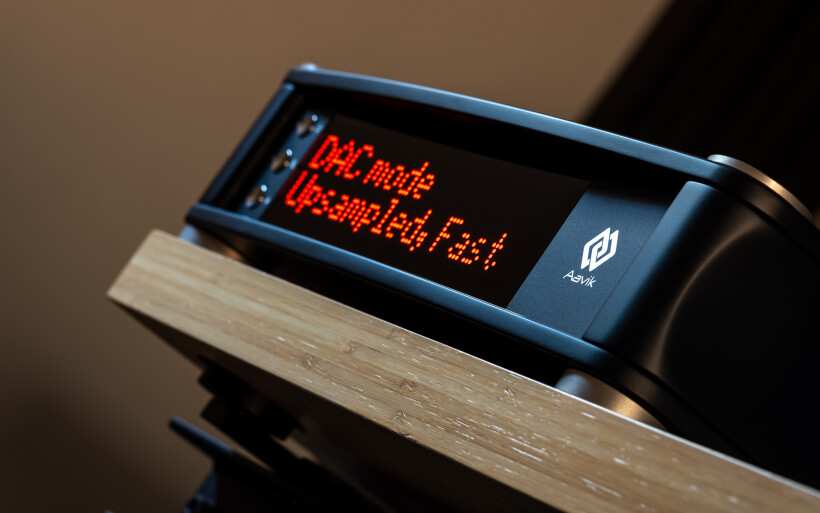 Audio Group Denmark’s rosters don’t specify which hardware group was the backbone for all else. There never was one. Aavik features exclusively electronics, Ansuz is known for accessories and cables and Børresen’s sole focus is on speakers. All three went live at the same time. Since day one their founders – Lars Kristensen and Michael Børresen – offered their customers enough building blocks to assemble entire setups without spending money elsewhere. These separate yet mutually compliant portfolios keep dozens of developments nicely organized without dilution. They also tell us that their makers think big and holistic. To these Danes every audio component is relevant no matter its purpose and each can make a staggering difference. Normally I’d file such talk as marketing fluff, but Ansuz Z2S anti-vibration footers (€3’500/ea.) and D-TC Supreme power cord (€36’000/3m) are good reminders why I won’t. Their crazy price tags reflect off-the-charts efficacy, simple as that. Our Victor award on each’s account stresses that point.
Audio Group Denmark’s rosters don’t specify which hardware group was the backbone for all else. There never was one. Aavik features exclusively electronics, Ansuz is known for accessories and cables and Børresen’s sole focus is on speakers. All three went live at the same time. Since day one their founders – Lars Kristensen and Michael Børresen – offered their customers enough building blocks to assemble entire setups without spending money elsewhere. These separate yet mutually compliant portfolios keep dozens of developments nicely organized without dilution. They also tell us that their makers think big and holistic. To these Danes every audio component is relevant no matter its purpose and each can make a staggering difference. Normally I’d file such talk as marketing fluff, but Ansuz Z2S anti-vibration footers (€3’500/ea.) and D-TC Supreme power cord (€36’000/3m) are good reminders why I won’t. Their crazy price tags reflect off-the-charts efficacy, simple as that. Our Victor award on each’s account stresses that point.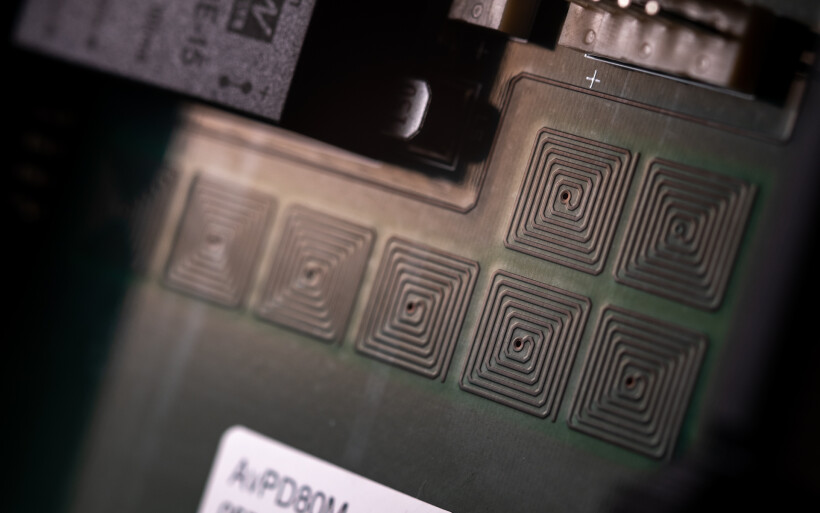 Lars and Michael’s skill set is extensive to put it mildly. They spare no expenses to land desirable results and charge accordingly. Then again, we shouldn’t expect anything less from individuals who for many years were associated with Raidho and Nordost. Audio Group Denmark’s top shelf stuff sells for body organs pretty much, while its entry-level troopers are available for far less. However, Aavik’s lineup comprised of many visually alike products no matter their tier and price doesn’t communicate that. The trick is in looking beyond their unified dress code and understanding that the company’s method of scaling up performance narrows down mainly to internal measures. A while ago here Srajan took under his scope Aavik D-180, D-280 and D-580 DACs. At first this review may look like one about three identical lookers with incomparable stickers, but its author mapped as many audibly progressive performance levels. Such stories are brilliant reminders to not judge a book by its cover. In audio that won’t get you far.
Lars and Michael’s skill set is extensive to put it mildly. They spare no expenses to land desirable results and charge accordingly. Then again, we shouldn’t expect anything less from individuals who for many years were associated with Raidho and Nordost. Audio Group Denmark’s top shelf stuff sells for body organs pretty much, while its entry-level troopers are available for far less. However, Aavik’s lineup comprised of many visually alike products no matter their tier and price doesn’t communicate that. The trick is in looking beyond their unified dress code and understanding that the company’s method of scaling up performance narrows down mainly to internal measures. A while ago here Srajan took under his scope Aavik D-180, D-280 and D-580 DACs. At first this review may look like one about three identical lookers with incomparable stickers, but its author mapped as many audibly progressive performance levels. Such stories are brilliant reminders to not judge a book by its cover. In audio that won’t get you far.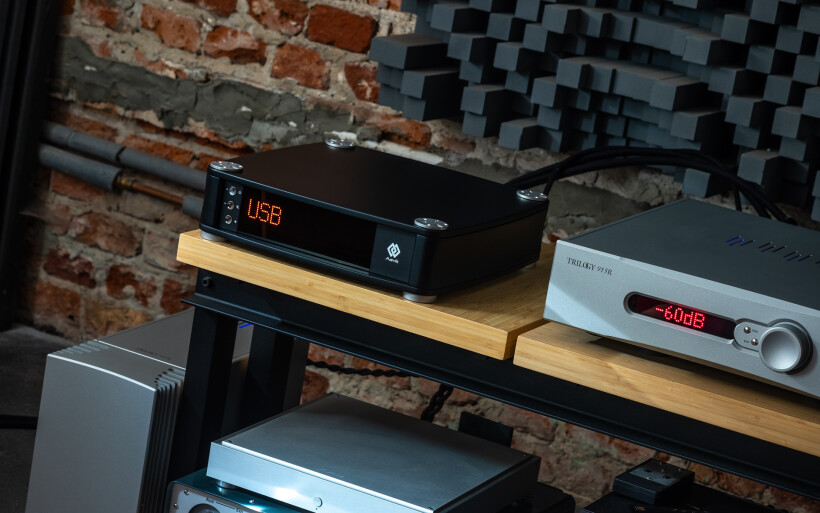 It has become a sort of tradition that Audio Group Denmark materials published at 6moons.com and HifiKnights.com don’t overlap. This approach effectively diversifies the company’s coverage at both sites and readers have more products to read about. Although I keep away from those reviewed by Srajan and vice versa, this time around I had to take a detour. The Aavik S-180 article published here in late March 2022 didn’t feature its sibling D-180 that was delivered on the same pallet. My Danish contact Morten told me that both these machines were made for each other, so I had to put that statement to the test at some point. Long story short, today’s that day. Besides, I like DACs.
It has become a sort of tradition that Audio Group Denmark materials published at 6moons.com and HifiKnights.com don’t overlap. This approach effectively diversifies the company’s coverage at both sites and readers have more products to read about. Although I keep away from those reviewed by Srajan and vice versa, this time around I had to take a detour. The Aavik S-180 article published here in late March 2022 didn’t feature its sibling D-180 that was delivered on the same pallet. My Danish contact Morten told me that both these machines were made for each other, so I had to put that statement to the test at some point. Long story short, today’s that day. Besides, I like DACs.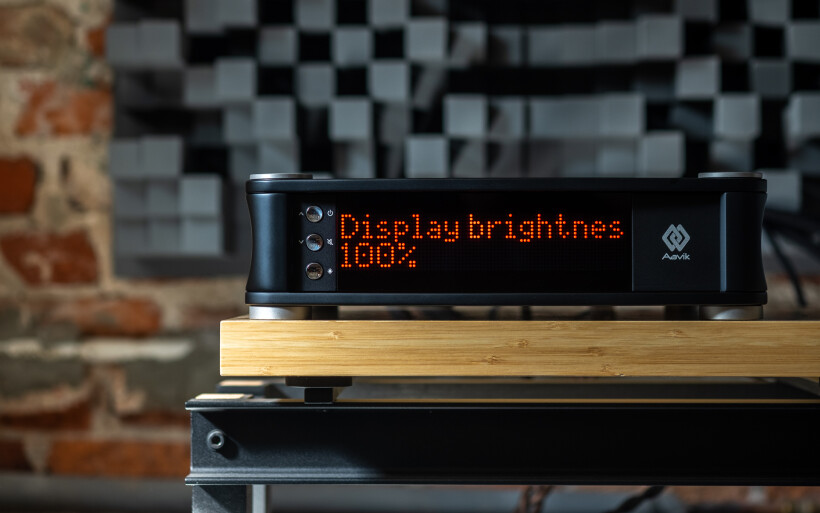 The upcoming top-shelf 880 range aside, all other Aavik products arrive inside semi-matte regular black boxes with a large glossy interlocked logo on top. The D-180 isn’t any different on that front. Twin internal finely cut dense foam liners secure it in a cloth bag. The upper insert’s two shallow compartments store a manual and Apple’s aluminium RC wand that activates the menu, changes its settings and digital inputs, engages standby and mutes playback. One day I’d like to see that remote all black with red buttons to match Aavik’s well-established color pattern, but that’s my preference. Just so you know, there’s no regular power cord in today’s box. Most individuals after such products consider these cables throwaways and Aavik know it.
The upcoming top-shelf 880 range aside, all other Aavik products arrive inside semi-matte regular black boxes with a large glossy interlocked logo on top. The D-180 isn’t any different on that front. Twin internal finely cut dense foam liners secure it in a cloth bag. The upper insert’s two shallow compartments store a manual and Apple’s aluminium RC wand that activates the menu, changes its settings and digital inputs, engages standby and mutes playback. One day I’d like to see that remote all black with red buttons to match Aavik’s well-established color pattern, but that’s my preference. Just so you know, there’s no regular power cord in today’s box. Most individuals after such products consider these cables throwaways and Aavik know it.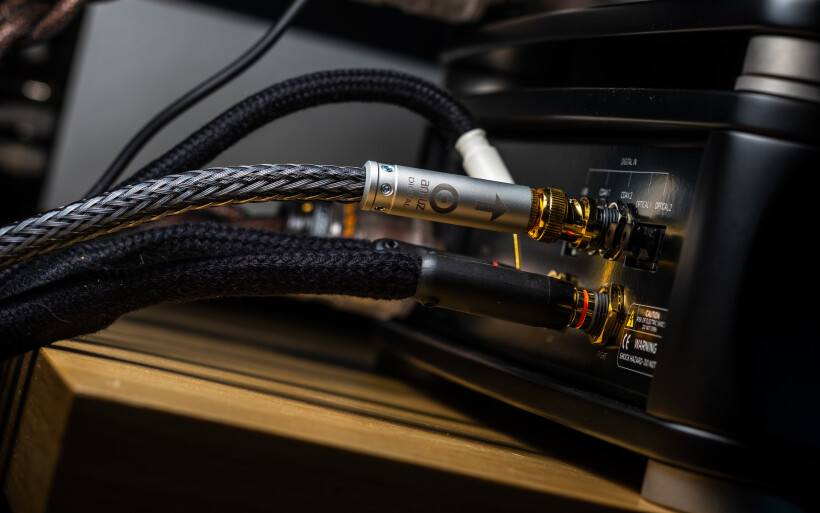 Aavik’s 180/280/580 series all share the same 102 x 384 x 400mm (H x W x D) adhesive-free anti-resonant HDF enclosure liberated from the hysteresis effects of paramagnetic aluminium. That explains why the D-180 loaner looks and measures exactly like i.e. the previously reviewed S-180 streamer. Upon inspecting their fronts, cheeks, hoods and underbellies one won’t be able to set them apart. Aavik’s identical satin black housings were designed to easily mount one atop the other and look orderly. Customers can stack as many as they like. To make that point, at various shows the manufacturer usually has on display towers of three these decks or more. The entry-level Aavik DAC weighs just 5.2kg and is rather compact, so all in all very easy to lift and move around. Its specs list a galvanically isolated asynchronous USB that accepts PCM/DSD data respectively up to 32-bit/192kHz and DSD128. Distortion is below 0.005% (THD@1kHz/0dB) and S/PDIF inputs go up to 24-bit/192kHz. Power draw is below 0.5W on standby and less than 20W in use.
Aavik’s 180/280/580 series all share the same 102 x 384 x 400mm (H x W x D) adhesive-free anti-resonant HDF enclosure liberated from the hysteresis effects of paramagnetic aluminium. That explains why the D-180 loaner looks and measures exactly like i.e. the previously reviewed S-180 streamer. Upon inspecting their fronts, cheeks, hoods and underbellies one won’t be able to set them apart. Aavik’s identical satin black housings were designed to easily mount one atop the other and look orderly. Customers can stack as many as they like. To make that point, at various shows the manufacturer usually has on display towers of three these decks or more. The entry-level Aavik DAC weighs just 5.2kg and is rather compact, so all in all very easy to lift and move around. Its specs list a galvanically isolated asynchronous USB that accepts PCM/DSD data respectively up to 32-bit/192kHz and DSD128. Distortion is below 0.005% (THD@1kHz/0dB) and S/PDIF inputs go up to 24-bit/192kHz. Power draw is below 0.5W on standby and less than 20W in use.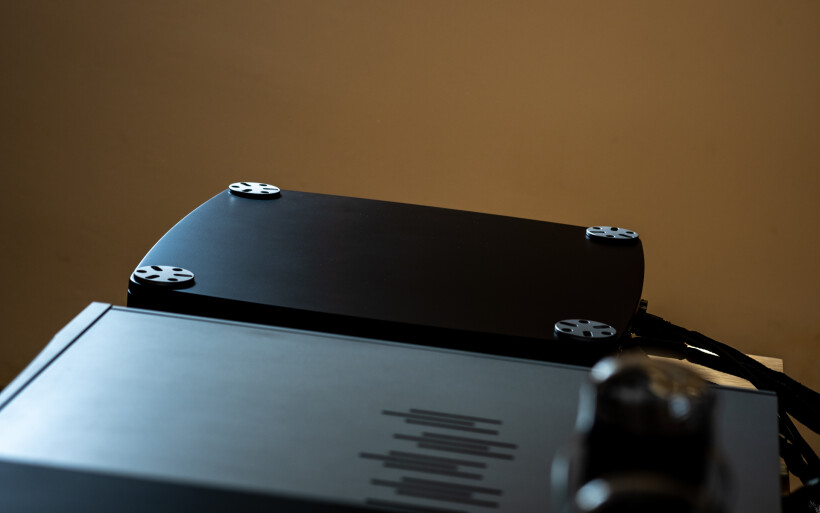 The enclosure comprises two concave cheeks between upper and lower plates locked into place via four long vertical bolts with dimpled discs on either side. Those round caps allow one to comfortably stack Aavik electronics either directly or with Ansuz anti-vibration pucks of choice. Three titanium balls per disc are all that’s required to make it so. The D-180’s modest Scandinavian exterior scores high on balance between stability, appealing looks and mechanical damping. Three multi-functional buttons on the front’s left side engage standby, mute playback, pair remote control, switch outputs and access/exit menu wherein one can check a firmware version, engage slow/fast filtering, switch internal upsampling on/off, set display brightness (10/40/70/100%) and dim it after 1-5 seconds. This gloss-red dot matrix shows large letters perfectly readable from afar. A single LED either in the lower left or right corner indicates whether the product is in standby or fully operational yet blacked out. Clever.
The enclosure comprises two concave cheeks between upper and lower plates locked into place via four long vertical bolts with dimpled discs on either side. Those round caps allow one to comfortably stack Aavik electronics either directly or with Ansuz anti-vibration pucks of choice. Three titanium balls per disc are all that’s required to make it so. The D-180’s modest Scandinavian exterior scores high on balance between stability, appealing looks and mechanical damping. Three multi-functional buttons on the front’s left side engage standby, mute playback, pair remote control, switch outputs and access/exit menu wherein one can check a firmware version, engage slow/fast filtering, switch internal upsampling on/off, set display brightness (10/40/70/100%) and dim it after 1-5 seconds. This gloss-red dot matrix shows large letters perfectly readable from afar. A single LED either in the lower left or right corner indicates whether the product is in standby or fully operational yet blacked out. Clever. The D-180’s rear end from left to right features a fused IEC inlet with the main on/off rocker, a RS-232 port for firmware updates, two DC trigger connectors and five digital inputs (one USB, 2x coaxial BNC and 2x Toslink), while RCA line outputs (4.5Vrms at 0dB, 100Ω) just below communicate a single-ended diet only. After removing four upper discs then bolts on the D-180’s bonnet I was able to easily remove it and inspect interior. From Srajan’s review we already know that this Aavik includes 4-layer PCBs, ultra-low jitter clocks, 13 low-noise voltage regulators and differential floating topology with virtual ground for the I/V stage to prevent incoming noise. Audio Group Denmark is all about suppressing it whenever possible and truly goes a long way to achieve this goal. The large lower board inside the D-180 houses a 100-240VAC compliant switching PSU that relies on sine not triangle waves and neighbors with the output stage. A smaller digital board piggybacked on top includes BurrBrown’s sample-rate converter and DAC, AKM’s S/PDIF receiver and USB transceiver based on XMOS powerful enough to turn today’s Aavik into a MQA renderer. Interestingly, its two internal boards’ dimensions are within specific ratios to mechanically tune them to certain desirable resonances. They’re also loaded with Audio Group Denmark’s signature noise-suppressing tech in form of 5 dither circuits, 36x active Tesla coils and 104x active square Tesla coils that respectively take forms of small ICs, spiraled squares and oppositely twisted black wires. The more of these essential bits to banish incoming noise there are inside a product, the more potent their action, which explains how Aavik scale up performance. The D-280 priced at €10’000 packs 8x/72x/176x these units respectively, while the €20’000 D-580 goes to 11x/108x/248x, gets a copper internal liner and embeds an external titanium X-shaped insert on its hood. Today’s DAC worked like a charm from the start and my streamer’s InnuOS app instantly recognized its USB receiver. I’ve experienced no hiccups or downtime and appreciated how sorted this Aavik was in general.
The D-180’s rear end from left to right features a fused IEC inlet with the main on/off rocker, a RS-232 port for firmware updates, two DC trigger connectors and five digital inputs (one USB, 2x coaxial BNC and 2x Toslink), while RCA line outputs (4.5Vrms at 0dB, 100Ω) just below communicate a single-ended diet only. After removing four upper discs then bolts on the D-180’s bonnet I was able to easily remove it and inspect interior. From Srajan’s review we already know that this Aavik includes 4-layer PCBs, ultra-low jitter clocks, 13 low-noise voltage regulators and differential floating topology with virtual ground for the I/V stage to prevent incoming noise. Audio Group Denmark is all about suppressing it whenever possible and truly goes a long way to achieve this goal. The large lower board inside the D-180 houses a 100-240VAC compliant switching PSU that relies on sine not triangle waves and neighbors with the output stage. A smaller digital board piggybacked on top includes BurrBrown’s sample-rate converter and DAC, AKM’s S/PDIF receiver and USB transceiver based on XMOS powerful enough to turn today’s Aavik into a MQA renderer. Interestingly, its two internal boards’ dimensions are within specific ratios to mechanically tune them to certain desirable resonances. They’re also loaded with Audio Group Denmark’s signature noise-suppressing tech in form of 5 dither circuits, 36x active Tesla coils and 104x active square Tesla coils that respectively take forms of small ICs, spiraled squares and oppositely twisted black wires. The more of these essential bits to banish incoming noise there are inside a product, the more potent their action, which explains how Aavik scale up performance. The D-280 priced at €10’000 packs 8x/72x/176x these units respectively, while the €20’000 D-580 goes to 11x/108x/248x, gets a copper internal liner and embeds an external titanium X-shaped insert on its hood. Today’s DAC worked like a charm from the start and my streamer’s InnuOS app instantly recognized its USB receiver. I’ve experienced no hiccups or downtime and appreciated how sorted this Aavik was in general.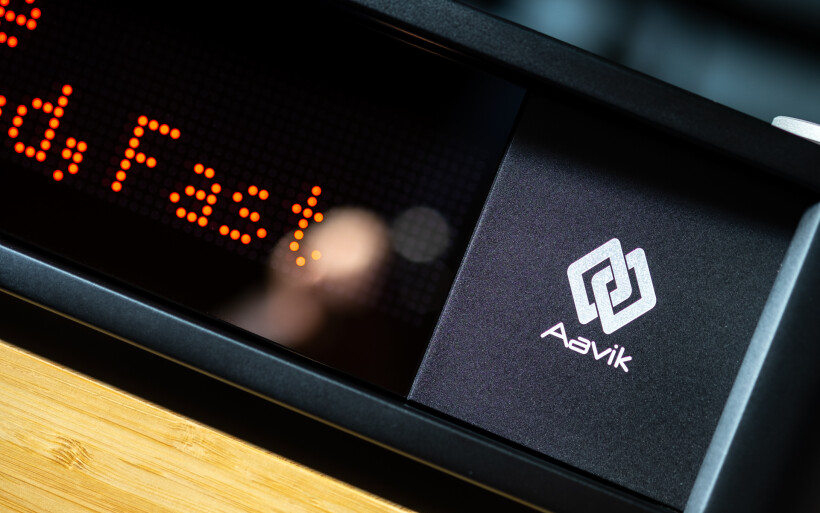 The Aavik D-180 naturally had to fight with my LampizatOr Pacific DAC loaded with Living Voice 300B output tubes and KR Audio 5U4G rectifier. Their power inlets saw Boenicke Audio Power Gate’s captive M2 cords, while iFi audio Mercury3.0 cable connected their USB inputs with the Innuos Statement’s extensively cleaned up USB out. Both DACs fed Trilogy 915R’s single-ended inputs via LessLoss entropic-processed C-MARC RCAs. After each swap I had to reconnect iFi’s cable, select a desired input on my line stage and compensate volume. Once I had a firm idea how the D-180 fared fronted by the Innuos, the S-180 entered the stage. Since the latter streamer doesn’t feature a USB output, it sent data to the D-180 via Ansuz Digitalz C2 BNC cable (€2’500) I had nearby. That way I was able to map what the two Aaviks accomplished as a team.
The Aavik D-180 naturally had to fight with my LampizatOr Pacific DAC loaded with Living Voice 300B output tubes and KR Audio 5U4G rectifier. Their power inlets saw Boenicke Audio Power Gate’s captive M2 cords, while iFi audio Mercury3.0 cable connected their USB inputs with the Innuos Statement’s extensively cleaned up USB out. Both DACs fed Trilogy 915R’s single-ended inputs via LessLoss entropic-processed C-MARC RCAs. After each swap I had to reconnect iFi’s cable, select a desired input on my line stage and compensate volume. Once I had a firm idea how the D-180 fared fronted by the Innuos, the S-180 entered the stage. Since the latter streamer doesn’t feature a USB output, it sent data to the D-180 via Ansuz Digitalz C2 BNC cable (€2’500) I had nearby. That way I was able to map what the two Aaviks accomplished as a team.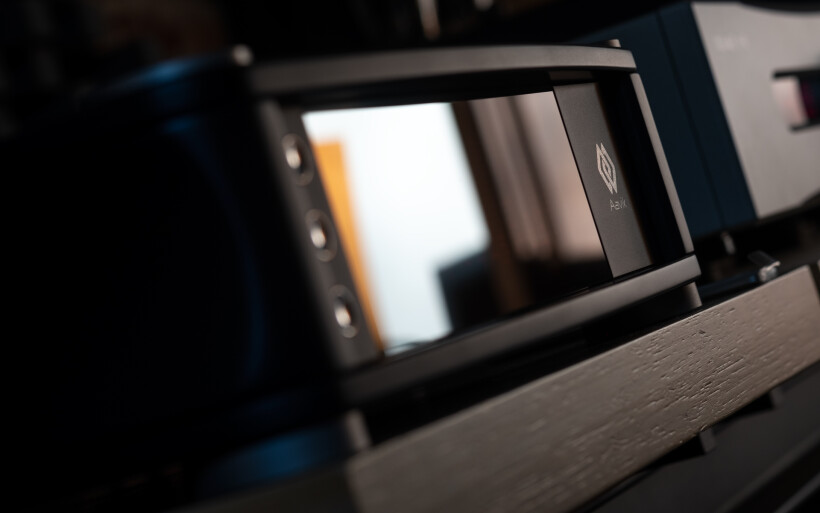 To quote myself: “Audio Group Denmark’s sound is fast, spatially expansive, resolved and meticulously stripped from noise to boost colors, smoothness, mass and backdrop blackness. The more expensive their hardware gets regardless of type, the more pronounced these traits become. By their standards today’s subject is an entry-level specimen for customers with limited funds that should keep high expectations at bay. It doesn’t. The company’s sales director Frits Dalmose once told me that they suck at downscaling so even their entry-level models are infused with the same sonic DNA. After hearing quite a few their products I can only agree. The S-180 loaner proved that point once more.”
To quote myself: “Audio Group Denmark’s sound is fast, spatially expansive, resolved and meticulously stripped from noise to boost colors, smoothness, mass and backdrop blackness. The more expensive their hardware gets regardless of type, the more pronounced these traits become. By their standards today’s subject is an entry-level specimen for customers with limited funds that should keep high expectations at bay. It doesn’t. The company’s sales director Frits Dalmose once told me that they suck at downscaling so even their entry-level models are infused with the same sonic DNA. After hearing quite a few their products I can only agree. The S-180 loaner proved that point once more.”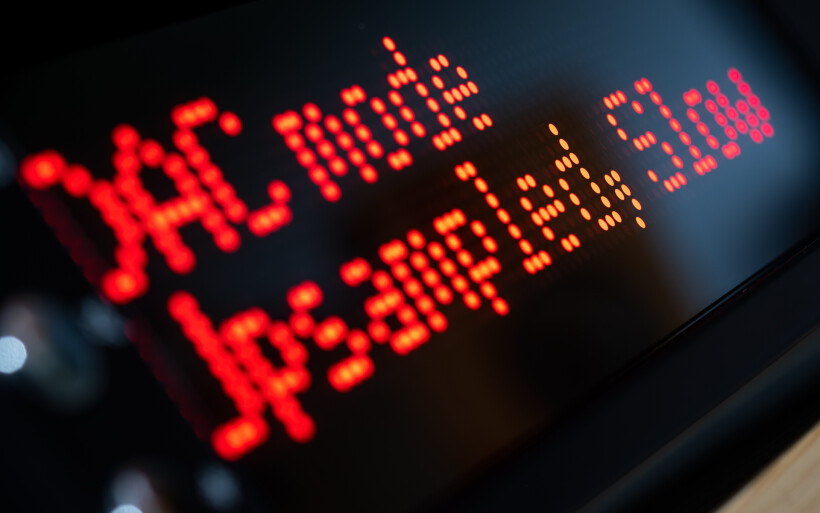 The Aavik D-180 did that too. Its gearing for well-developed tone, round edges, softness, moisture, hefty bass, density and pitch-black background was evident. I honestly expected nothing less considering my familiarity with the manufacturer’s house sound and methods of noise removal. That said, it’s interesting how our optics alter in time. Years back I’d have easily associated the D-180’s flavor as described primarily with its on-board BurrBrown chip widely known for such sonic tailoring. Now I don’t, which is the effect of sampling multiple functionally diverse products built upon extensive noise reduction and simply knowing more. Just to be clear, a DAC topology factors in, just nowhere near as much as most people think. We’re exposed to it plus power supplies, output stages, chassis mechanics, DSP and internal tweaks if they apply. Since all that partakes in making the sound we hear, I’m clueless why so many enthusiasts still obsess over d/a conversion bits alone without paying attention to anything else. It’s actually funny given that designing two oppositely profiled devices with the same DAC inside is a breeze to a skilled engineer, but I digress.
The Aavik D-180 did that too. Its gearing for well-developed tone, round edges, softness, moisture, hefty bass, density and pitch-black background was evident. I honestly expected nothing less considering my familiarity with the manufacturer’s house sound and methods of noise removal. That said, it’s interesting how our optics alter in time. Years back I’d have easily associated the D-180’s flavor as described primarily with its on-board BurrBrown chip widely known for such sonic tailoring. Now I don’t, which is the effect of sampling multiple functionally diverse products built upon extensive noise reduction and simply knowing more. Just to be clear, a DAC topology factors in, just nowhere near as much as most people think. We’re exposed to it plus power supplies, output stages, chassis mechanics, DSP and internal tweaks if they apply. Since all that partakes in making the sound we hear, I’m clueless why so many enthusiasts still obsess over d/a conversion bits alone without paying attention to anything else. It’s actually funny given that designing two oppositely profiled devices with the same DAC inside is a breeze to a skilled engineer, but I digress.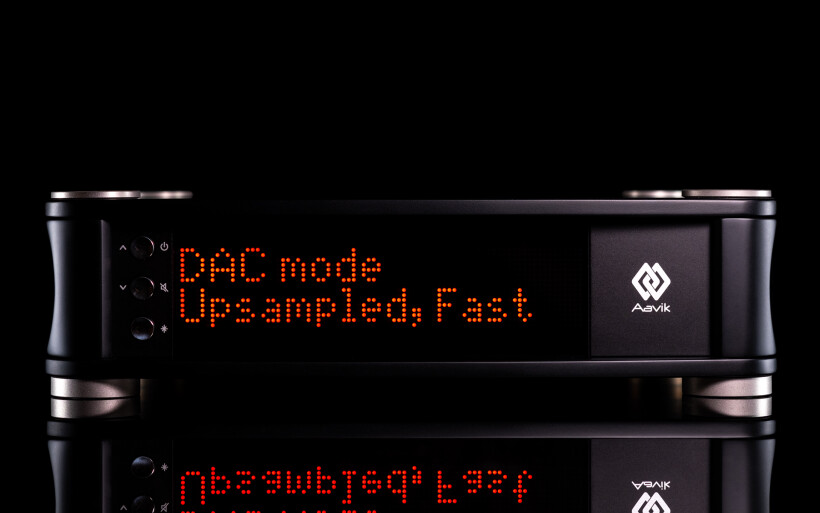 It’s fair to come clean and admit that my experiences with the two previously reviewed Aaviks had me a fair bit biased. These functionally different decks struck me as quite alike-voiced performers. Since their internal noise-killing components and mechanically sorted HDF chassis were the reason, today’s D-180 also infused with these critical ingredients was destined to sound similar to at least some degree. It didn’t take long to notice that it did indeed, but the most interesting discovery was found elsewhere. This DAC was the third Aavik in a row that behaved the same within my setup and that was telling. Its makers’ ability to land several so geared products regardless of their core tasks implies their high-tiered expertise and firm focus on the ultimate goal rather than individual means to achieve it. These come afterwards, once the base is set in stone. Either way, the takeaway of the above is painfully obvious. Customers interested in either Aavik know exactly what to expect and I find that very comforting.
It’s fair to come clean and admit that my experiences with the two previously reviewed Aaviks had me a fair bit biased. These functionally different decks struck me as quite alike-voiced performers. Since their internal noise-killing components and mechanically sorted HDF chassis were the reason, today’s D-180 also infused with these critical ingredients was destined to sound similar to at least some degree. It didn’t take long to notice that it did indeed, but the most interesting discovery was found elsewhere. This DAC was the third Aavik in a row that behaved the same within my setup and that was telling. Its makers’ ability to land several so geared products regardless of their core tasks implies their high-tiered expertise and firm focus on the ultimate goal rather than individual means to achieve it. These come afterwards, once the base is set in stone. Either way, the takeaway of the above is painfully obvious. Customers interested in either Aavik know exactly what to expect and I find that very comforting.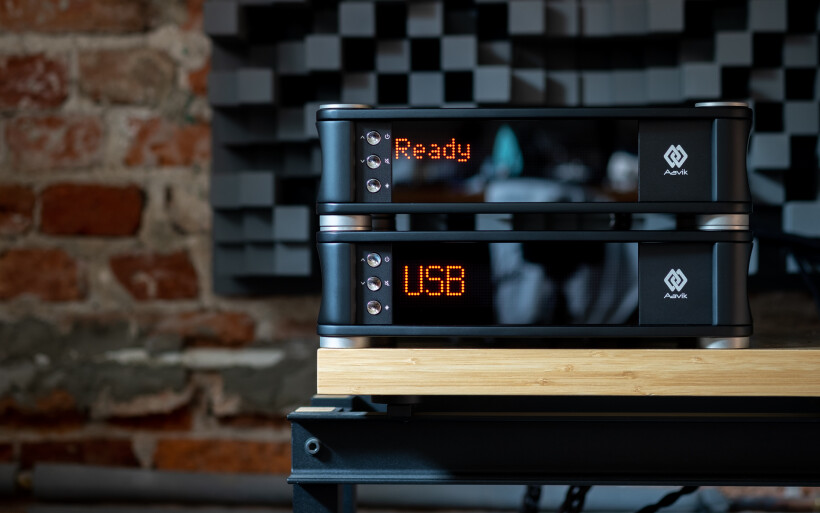 My visit to the Audio Group Denmark premises in Aalborg and Aarhus was useful in understanding why Aavik hardware sounds the way it does. Still, my setup’s regular residents contributed even more. Audio reviewers evaluate loaner samples in the context of their reference platforms, rooms and familiarity with similar products. That said, the Aavik I-280 and S-180 clashed with the oppositely groomed Kinki Studio EX-M1 class AB integrated amp and Innuos Statement streamer respectively. Needless to say, detecting, tracking and describing major differences between such contestants is a child’s play. It honestly doesn’t take long to learn which tuning is primarily quick, open, energetic, fresh and radiant, and which one is mainly dense, round, dark, viscous, grounded and atmospheric. The Aavik D-180 voiced in the ballpark of its siblings unsurprisingly represented the latter league. My ripped, direct, zesty, spatially liberated, wiry and a touch lean Pacific DAC played in the former. Early impressions rarely change in time yet only get us so far. The key question to ask then is about the newcomer’s faith in the long run. Will it be used once the introductory listening days are over? Or will it land in its box shortly after? Seeing what’s in these cards is the fun part.
My visit to the Audio Group Denmark premises in Aalborg and Aarhus was useful in understanding why Aavik hardware sounds the way it does. Still, my setup’s regular residents contributed even more. Audio reviewers evaluate loaner samples in the context of their reference platforms, rooms and familiarity with similar products. That said, the Aavik I-280 and S-180 clashed with the oppositely groomed Kinki Studio EX-M1 class AB integrated amp and Innuos Statement streamer respectively. Needless to say, detecting, tracking and describing major differences between such contestants is a child’s play. It honestly doesn’t take long to learn which tuning is primarily quick, open, energetic, fresh and radiant, and which one is mainly dense, round, dark, viscous, grounded and atmospheric. The Aavik D-180 voiced in the ballpark of its siblings unsurprisingly represented the latter league. My ripped, direct, zesty, spatially liberated, wiry and a touch lean Pacific DAC played in the former. Early impressions rarely change in time yet only get us so far. The key question to ask then is about the newcomer’s faith in the long run. Will it be used once the introductory listening days are over? Or will it land in its box shortly after? Seeing what’s in these cards is the fun part.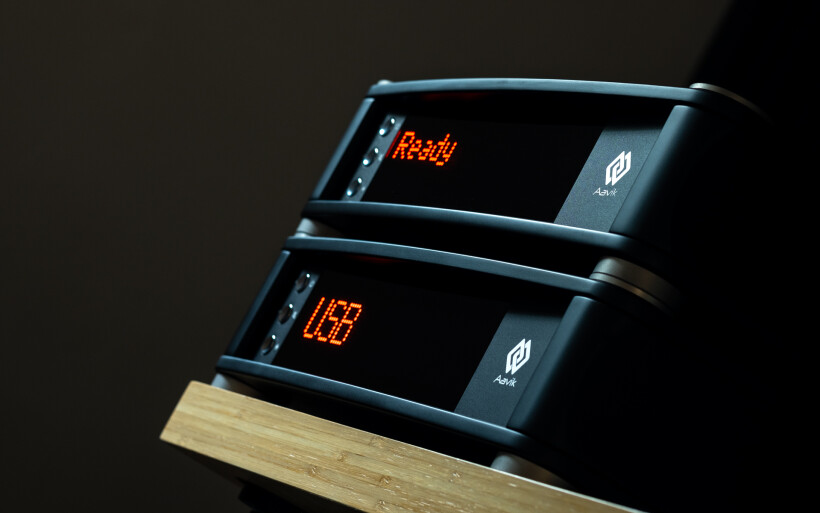 The Aavik D-180 was used in my system for several weeks and had to step down just because one other product needed that space. That alone had me rather surprised because I thoroughly enjoy what the Pacific does there and represents my kind of sound in general. Still, both DACs clocked roughly the same duty time and largely because they were so different. The Aavik’s naturally weightier rounder disposition allowed me to enjoy several bad recordings I find quite unlistenable with the inherently shinier sunnier more investigative LampizatOr. The latter stepped in each time my playlist demanded spatial intensity, acceleration, precision, magnified outlines, impact, dynamic pop and enveloping instrumental closeness. The former worked like a charm when gravitas, roundness, softness, cloudier more distant vibe and the entire perspective anchored deeper into the soundstage had to be emphasized. The D-180 did brilliantly on atmospheric minimalist tribal music with large bloomy drums, background whispers and echoing vocals a’la Heilung, while the Pacific was irreplaceable on i.e. Rodrigo y Gabriela’s unamplified guitar stunts. If on tonal qualities one was zesty and sweet like a fully ripe tangerine, then the other was a mango fruit; mellower, even sweeter and without the acidic aftertaste.
The Aavik D-180 was used in my system for several weeks and had to step down just because one other product needed that space. That alone had me rather surprised because I thoroughly enjoy what the Pacific does there and represents my kind of sound in general. Still, both DACs clocked roughly the same duty time and largely because they were so different. The Aavik’s naturally weightier rounder disposition allowed me to enjoy several bad recordings I find quite unlistenable with the inherently shinier sunnier more investigative LampizatOr. The latter stepped in each time my playlist demanded spatial intensity, acceleration, precision, magnified outlines, impact, dynamic pop and enveloping instrumental closeness. The former worked like a charm when gravitas, roundness, softness, cloudier more distant vibe and the entire perspective anchored deeper into the soundstage had to be emphasized. The D-180 did brilliantly on atmospheric minimalist tribal music with large bloomy drums, background whispers and echoing vocals a’la Heilung, while the Pacific was irreplaceable on i.e. Rodrigo y Gabriela’s unamplified guitar stunts. If on tonal qualities one was zesty and sweet like a fully ripe tangerine, then the other was a mango fruit; mellower, even sweeter and without the acidic aftertaste.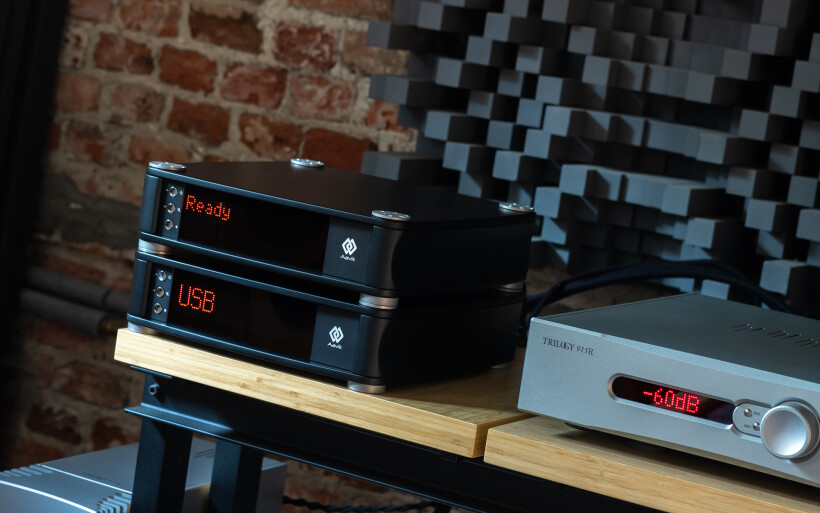 My reference DAC did more as far as technical aspects go. It was sensibly faster, more instantaneous, controlling, spatially bolder and surrounding in a way that puts me on stage among virtual sound sources, behind which multiple tiny bits suspended way deeper in air are still easily traceable. No other DAC I’d heard to date can render aural bubbles brimming with effortless detail as convincingly and so couldn’t the Dane. It felt more remote, less focused and resolved and not quite as deep, yet still charmed well enough to not become a subpar specimen. Let me stress again that it kept my ears entertained as frequently as the Pacific, which is quite the achievement considering the price difference between these machines. The Aavik’s voicing had my attention not only because it was a nice counterpoint for the local DAC’s character. In spite of the former’s profile built upon thickness, expressiveness, tonal mass, thick edges and the lot, it didn’t emerge as any stuffy, chubby, wobbly, excessively warm, spatially restrictive, slow or unclear. Clarity is the outcome of noise removal after all and the Aavik ranked high on that front, but it had my focus locked on its main traits beyond that scope. This was neither a con nor something bothersome during playback, not at all. That personality simply was what it was and led me to where it wanted. By following it I admired the view instead of thinking about what it didin’t do or could’ve done differently. To my ears that was meaningful. Any audio affair that keeps such thoughts at bay is a good product by my standards no matter what it is. On that note, the Pacific with Living Voice 300B output tubes could use a tad more fat under its paper-thin wiry skin, but once it’s engaged I don’t think about that. I had a lot of fun with the D-180 because it wasn’t undercooked in any regard and in that sense it resembled its siblings too.
My reference DAC did more as far as technical aspects go. It was sensibly faster, more instantaneous, controlling, spatially bolder and surrounding in a way that puts me on stage among virtual sound sources, behind which multiple tiny bits suspended way deeper in air are still easily traceable. No other DAC I’d heard to date can render aural bubbles brimming with effortless detail as convincingly and so couldn’t the Dane. It felt more remote, less focused and resolved and not quite as deep, yet still charmed well enough to not become a subpar specimen. Let me stress again that it kept my ears entertained as frequently as the Pacific, which is quite the achievement considering the price difference between these machines. The Aavik’s voicing had my attention not only because it was a nice counterpoint for the local DAC’s character. In spite of the former’s profile built upon thickness, expressiveness, tonal mass, thick edges and the lot, it didn’t emerge as any stuffy, chubby, wobbly, excessively warm, spatially restrictive, slow or unclear. Clarity is the outcome of noise removal after all and the Aavik ranked high on that front, but it had my focus locked on its main traits beyond that scope. This was neither a con nor something bothersome during playback, not at all. That personality simply was what it was and led me to where it wanted. By following it I admired the view instead of thinking about what it didin’t do or could’ve done differently. To my ears that was meaningful. Any audio affair that keeps such thoughts at bay is a good product by my standards no matter what it is. On that note, the Pacific with Living Voice 300B output tubes could use a tad more fat under its paper-thin wiry skin, but once it’s engaged I don’t think about that. I had a lot of fun with the D-180 because it wasn’t undercooked in any regard and in that sense it resembled its siblings too. At that point the Innuos had to make room for the S-180 streamer. In theory the two similarly profiled Aaviks could’ve been potentially a bit much, but the reality had it otherwise. Noise rejection scales up. The more potent it is, the more the sound we hear evolves into a texturally wider, juicier, clearer, more oxygenated and agile version of itself. Although the entire perspective gets sensibly thicker and darker, we still see outlines more precise than they were and longer finer shimmers on top. That’s exactly how the Aavik streamer boosted the D-180’s core traits without downscaling anything else. My setup with the Innuos Statement sounded quicker, punched harder, dug as deep, projected airier landscapes and was more radiant and insightful, but it also felt a touch more mechanical, lighter and less intense on pigmentation. The math was simple. The twice as dear Portuguese streamer/server gave me noticeably more yet had to give something in return. That didn’t matter much in the grand scheme. The S-180 wasn’t a counter-productive companion for the D-180, quite the contrary. It turned out highly fitting and that’s the key takeaway. The two worked awesome within my setup and I’m confident that any other also tailored for hi-rez performance will fully appreciate these Aaviks as a team.
At that point the Innuos had to make room for the S-180 streamer. In theory the two similarly profiled Aaviks could’ve been potentially a bit much, but the reality had it otherwise. Noise rejection scales up. The more potent it is, the more the sound we hear evolves into a texturally wider, juicier, clearer, more oxygenated and agile version of itself. Although the entire perspective gets sensibly thicker and darker, we still see outlines more precise than they were and longer finer shimmers on top. That’s exactly how the Aavik streamer boosted the D-180’s core traits without downscaling anything else. My setup with the Innuos Statement sounded quicker, punched harder, dug as deep, projected airier landscapes and was more radiant and insightful, but it also felt a touch more mechanical, lighter and less intense on pigmentation. The math was simple. The twice as dear Portuguese streamer/server gave me noticeably more yet had to give something in return. That didn’t matter much in the grand scheme. The S-180 wasn’t a counter-productive companion for the D-180, quite the contrary. It turned out highly fitting and that’s the key takeaway. The two worked awesome within my setup and I’m confident that any other also tailored for hi-rez performance will fully appreciate these Aaviks as a team.
I remember how during one of our chats in Aalborg three springs ago Lars Kristensen calmly listened to my casual remarks about digital, then only smiled and said that I really shouldn’t underestimate their DACs. Although back then I already knew that Audio Group Denmark are high-tiered specialists who walk to their own drummer and make silly good stuff, I considered their digital hardware as portfolio extenders. It’s not. The Aavik S-180 made that point very clear in May, while the D-180 does the same today. This internally clever effort looks the part, operates flawlessly and performs impressively enough to easily hold its ground against similarly priced competitors. If you’re are after a DAC and already fancy Aavik house sound, the odds are that this one might be just the ticket!
Associated Equipment:
- Amplifier: Trilogy 995R, FirstWatt F7, Enleum AMP-23R
- DAC: LampizatOr Pacific (KR Audio T-100 / Living Voice 300B + KR Audio 5U4G Ltd. Ed.)
- Speakers: Boenicke Audio W11 SE+, sound|kaos Vox 3afw
- Transport: Innuos Statement, fidata HFAS1-S10U, Aavik S-180
- Preamplifier: Trilogy 915R, Thöress DFP
- Speaker cables: Boenicke Audio S3, LessLoss C-MARC
- Headphones: HifiMan Susvara
- Speaker signal conditioning: LessLoss Firewall for Loudspeakers
- Anti-vibration conditioning: 12x Carbide Audio Carbide Bases (under DAC, preamp and speakers)
- Interconnects: LessLoss Entropic Process C-MARC, Boenicke Audio IC3 CG
- Power components: Gigawatt PC-3 SE EVO+/LC-3 EVO, LessLoss C-MARC, LessLoss Entropic Process C-MARC, Boenicke Audio Power Gate, ISOL-8 Prometheus
- USB components: iFi audio Mercury3.0
- Rack: Franc Audio Accesories Wood Block Rack 1+3
- Network: Fidelizer EtherStream, Linksys WRT160N
- Music: NativeDSD
Retail prices of reviewed components in EU (incl. tax):
- Aavik D-180: €6’000
Manufacturer: Aavik



